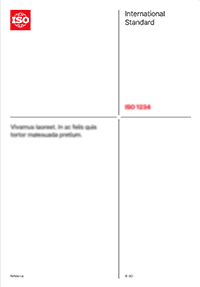Abstract
This document provides a methodology for calculating the carbon balance of (a) forest management unit(s) (FMU). This quantification methodology is intended to demonstrate to what extent carbon pools in the FMU represent a net greenhouse gas sink or a net greenhouse gas source. This document provides information that can be used on organizational or aggregated product levels.
This calculation methodology considers:
— the geographical scale of the FMU;
— forest management practices;
— land ownership arrangements;
— time periods;
— the use of forest inventory data and other data sources for determining the forest carbon balance; and
— allocation of forest carbon balance to wood that has been sourced in FMU(s).
Greenhouse gas emissions from fossil fuels or industrial processes related to forestry operations (e.g. production and distribution of fertilizers, fuels for machinery) are not included in this document.
NOTE 1 Greenhouse gas emissions related to forestry operations are covered in ISO 13391-1.
The quantity of wood entering the harvested wood products carbon pool is not included in this document.
NOTE 2 Material entering the harvested wood products carbon pool is calculated in ISO 13391-1.
This document is intended to be used by organizations seeking to understand, commit to or contribute to climate change mitigation. These organizations can be either private or public, regardless of type or size, and located in any jurisdiction or any position within a specific value chain.
General information
-
Status: PublishedPublication date: 2025-04Stage: International Standard published [60.60]
-
Edition: 1Number of pages: 15
-
Technical Committee :ISO/TC 287
- RSS updates
This standard contributes to
- Achieve climate neutrality: GHG emissions / mitigation; Carbon footprint;


